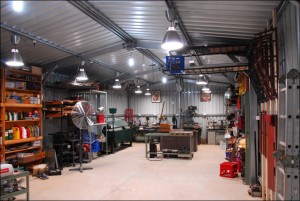One of the automotive ideas that seems to be taken as gospel is that the chassis and suspension arms should be stiff – that is, neither should deflect when subject to load. In fact, if I’d had a dollar for every time I’ve read that ‘good handling depends on a stiff chassis’ I’d be richer than I am.
But I think that, especially for ultra-light vehicles, this notion is simplistic.
Firstly, every structure deflects under load. That deflection may be small, but it occurs. Even the Sydney Harbour Bridge has an allowable deflection under maximum load of 4.5 inches (114mm) in the centre of its span.
Secondly – and more importantly – chasing reduced deflection will add substantially to weight. The corollary of that – the lightest possible vehicle will always have deflections.
Finally, not all deflections are bad.
Let’s start off with the last. Most cars use rubber bushes that are designed to have differing stiffnesses in differing planes. One reason for this is so that wheels can move fractionally backwards when they meet a bump, reducing harshness. Another reason is that in some (many?) suspensions, if the bushes didn’t have ‘give’, the suspension would lock up solid during travel.
Passive steering suspension systems – the first well publicised was the Porsche ‘Weissach’ axle of the 928 – often use bushes that deflect, or links that give an effectively ‘non-stiff’ suspension in some planes.
Going backwards to the second point, getting rid of measurable deflections in chassis and suspension arms will result in a major increase in weight. In ultra-light vehicles (eg those powered by human legs, a small petrol motor or an electric motor), and especially those made from chrome moly steel tube, deflections under major loadings are often able to be seen by eye.
For example, the peripheral torsional wind-up of a front suspension arm might be 5mm or more under maximum braking, and under max cornering there might be 3 or 4mm of bending in wheel supports. In a human powered vehicle (HPV) with a recumbent seat and front pedals, boom flex under maximum pedalling force can often be 10mm or more.
So does all this matter? In some cases (like boom flex, that subtracts from the power available from the rider), yes it does.
But in other cases – not necessarily.
What is required is that the structure is never stressed to the point of failure, and that the vehicle dynamics remain consistent.
I have been musing over these ideas in the context of the HPV I have been building.
I know that under brakes the beam front axle will torsionally wind-up, reducing the static castor of the front, steering wheels. That might lead to steering dartiness under brakes – but for the fact that when the front brakes are in action, the vehicle has some dive, that in turn causes a rapid increase in castor.
On my previous recumbent trike design (called the Air 150), I had difficulties in getting rid of steering twitchiness. The problem felt all the world like toe-in bump steer, where I’d put on some steering lock, the machine would roll slightly – and the outer wheel would toe-in, giving a sharper steering response than requested. That was the theory – but I found this odd when on the workshop floor, toe-in on bump was small or non-existent.
But I now wonder if the outer semi-leading suspension arm wasn’t flexing sideways a little with the sudden application of the lateral force, which in turn caused “turn-in steer” as the suspension arm and the steering tie-rod flexed through different arcs.
Certainly, at the very early stage of testing I am at with my current HPV ‘Chalky’, there’s no steering twitchiness on turn-in – and the front suspension is laterally much stiffer than the previous design.
(I fixed the Air 150’s twitchiness by setting the suspension up with either static toe-out, or toe-out on bump – but the problem returned when carrying really big loads. If the arms were bending laterally, perhaps it just needed even more static or bump toe-out to compensate?)
And I guess that’s the point. In a vehicle – any vehicle – there will be dynamic variations that don’t match the static settings.
(Many years ago, I remember having a wheel alignment done on my Daihatsu Mira Turbo. I was happy with the alignment machine’s read-outs – but then the mechanic got me to sit in the driver’s seat. On that simple car, the suspension settings immediately changed!)
If the weight of the vehicle has been has to be kept to an absolute minimum, and so major deflections occur in the suspension and frame, the trick is to optimise the direction of those deflections so that they don’t subtract from – and possibly even add to – the on-road experience.
That’s a very different notion to ‘keep everything as stiff as possible’.

 Julian Edgar, 50, has been writing about car modification and automotive technology for nearly 25 years. He has owned cars with two, three, four, five, six and eight cylinders; single turbo, twin turbo, supercharged, diesel and hybrid electric drivelines. He lists his transport interests as turbocharging, aerodynamics, suspension design and human-powered vehicles.
Julian Edgar, 50, has been writing about car modification and automotive technology for nearly 25 years. He has owned cars with two, three, four, five, six and eight cylinders; single turbo, twin turbo, supercharged, diesel and hybrid electric drivelines. He lists his transport interests as turbocharging, aerodynamics, suspension design and human-powered vehicles.


